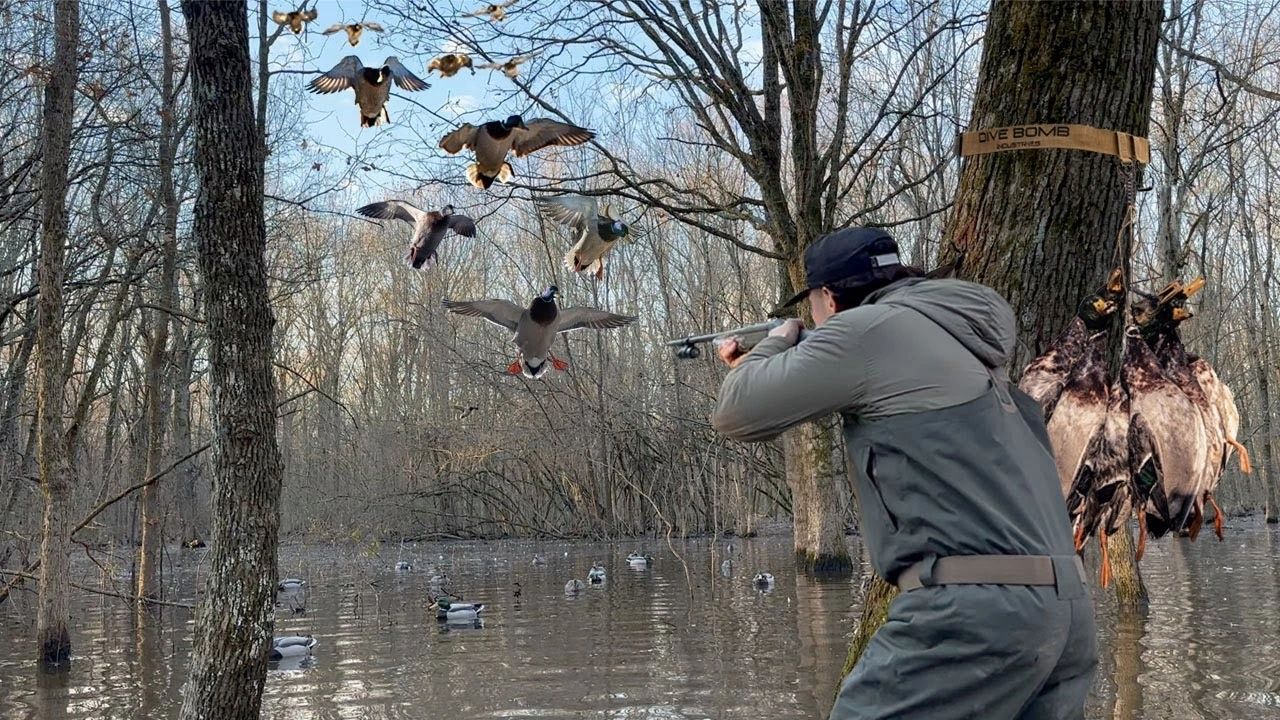20 of the best bike trails in the U.S., including this 95-mile trail through Alabama and Georgia
[ad_1]
Early in the pandemic, a revelation for many who found themselves stuck in place was that biking offered more than just exercise. It was a coping mechanism and a safe way to interact with others. It was freedom. And it was fun.
Soon followed a national surge of people discovering a growing network of trails. Parks throughout the country reported record trail usage. Many bike shops experienced high demand followed by a choking off of supply, as manufacturers worldwide struggled to keep factories and shipping operations going amid the pandemic.
Today, bike shops slowly are getting restocked while e-bike technology is improving rapidly, making the battery-powered, pedal-assist bikes more accessible, safer and easier to use. That has added additional fuel to the explosion in trail usage as more cyclists ride more often and pedal farther.
This also has created an increased interest in “destination trails’’ — trails that cyclists will travel across the state or across the country for a chance to ride for a day, or several days, and experience and appreciate America in a new way.
Fortunately, predating the pandemic there was a national push to build and connect more trails. A prime example is New York’s Empire State Trail, a 750-mile network of trails and road routes that was completed in December 2020. Especially popular are trails built along retired railroad beds, which communities see as relatively inexpensive opportunities to increase access to recreation and grow local tourism.
These rails-to-trails, as they are known, offer gentle grades of usually no more than 2%, and surfaces that often are paved or finely crushed limestone, so they are family friendly and keep folks off busy roads. Adding to the fun, many rail-trails feature repurposed railroad trestles with breathtaking views, long tunnels through mountains and small towns along the way that embrace their rail history as well as the bikers and hikers who use the trails.
Several states are filling the gaps between networks of rail-trails, connecting urban centers with rural areas, spectacular vistas and remote beauty. There are more than 2,100 rail-trails totaling more than 24,000 miles in the United States, according to the Rails-to-Trails Conservancy. The conservancy also is championing a national trail across 12 states from Washington to Washington, D.C., connecting many of the trails already in existence or being built. About 2,000 miles of the 3,700-mile Great American Rail-Trail are in place, with 88 gaps remaining.
As spring begins, we compiled an unofficial summary of some of the top destination-worthy rail-trails and similar routes, pulling from the conservancy’s trail Hall of Fame, personal experience and the advice of members of a popular rails-to-trails Facebook group page. Here they are, in alphabetical order:

The Banks-Vernonia State Trail, is a 22-mile rails-to-trails project, completed in 2010 in the Willamette Valley in Oregon.Hannah Leone/The Oregonian
Banks-Vernonia State Trail, Oregon
One of the Northwest’s first rail-trails also is one to watch because plans call for it to connect to the expanding Salmonberry Trail, which eventually will link the Willamette Valley to the Pacific Coast. The 22-mile Banks-Vernonia features a 735-foot Buxton Trestle as well as impressive coastal forests and pastoral farmland. Website: stateparks.oregon.gov
Bizz Johnson National Recreation Trail, California
Popular with bike campers and single-day users, the 25-mile Bizz is a great way to experience the remote and rugged Susan River Canyon. The trail crosses the Susan River 12 times, so there are plenty of chances to cool off and fish, too. California is not often thought of with regard to fall foliage, but the Bizz is especially beautiful in the fall, and the Bureau of Land Management offers a fall color ride with shuttles. Website: blm.gov/visit/bizz-johnson

A dramatic view of the Allegheny Mountains near the Eastern Continental Divide on the Great Allegheny Passage Trail in Pennsylvania. Tim Warsinskey, Advance Local
C&O Canal Towpath and Great Allegheny Passage, Virginia, Maryland and Pennsylvania
Stretching 334 miles from Washington, D.C., to Pittsburgh, these two distinct trails that connect in Cumberland, Maryland offer the feeling of stepping back in time. The 184-mile C&O from Washington to Cumberland is extremely diverse in cultural heritage and is popular with bike campers. The C&O’s trail surface is not as well maintained as some others, but the opportunity to follow the same paths as early settlers and Civil War soldiers or traverse through long tunnels (the Paw P
aw Tunnel is made of nearly 6 million bricks and took 14 years to build) and under historic aqueducts is a rich experience.
The picturesque GAP Trail is a “bucket list” trail for cyclists all over the world. Just west of Cumberland, it features a fairly smooth climb to (or descent from, depending on your direction) the 2,392-foot Eastern Continental Divide, as well as the nearby Mason-Dixon Line. The trail is dotted with welcoming trail towns, and the GAP’s halfway point is the riverfront town of Ohiopyle, Pennsylvania, which features a state park, whitewater rafting and is nearby two historic Frank Lloyd Wright homes, Fallingwater and Kentuck Knob. The region’s steel history is on display as you head toward Pittsburgh and its gorgeous Point Park terminus, at the confluence of the Allegheny and Monongahela rivers, forming the Ohio River. A fun option is to take an Amtrak train between Pittsburgh and Washington and bike back. Website: gaptrail.org
Elroy-Sparta State Trail, Wisconsin
Considered the granddaddy of U.S. rail-trails, built in the 1960s, it serves as a model for rail-trail projects. The beloved 33-miler also is tons of fun and features three long tunnels with hills in the middle of each. The trail is a hub for other trails in a state known for its enthusiastic embrace of biking. Sparta bills itself as the “Bicycling Capital of America” and lives up to the hype. Website: wisconsin.gov/topic/parks/elroysparta

A map of the Empire State Trail, which is was completed in December 2020. Empiretrail.gov mapScreenshot from empiretrail.ny.gov | nyup.com
Empire State Trail, New York
New York’s T-shaped trail network stretches from the Canadian border to Manhattan and from Buffalo to Albany, covering 750 miles and connecting in Albany. Much of the Empire State is rails-to-trails, dedicated hike & bike trails and a trail alongside the Erie Canalway, but numerous on-road sections remain, especially north of Albany, and heavy traffic warrants extra caution. The experience of approaching and riding into Manhattan on a bike path is like none other. By contrast, the placid and scenic Erie Canalway and Mohawk River sections between Buffalo and Albany are “about as close to biking bliss as you can get in one of the least bike-friendly regions of the country,’’ according to a New York Times overview. Website: empirestate.ny.gov
George S. Mickelson Trail, South Dakota
There’s a wow moment around almost every bend. Some users describe the Mickelson as the best way to see the Black Hills. Riding through its meadows when wildflowers are in bloom is breathtaking, to say nothing of the dense forests, incredible vistas, tunnels and Old West history (the northern trailhead is in Deadwood and Custer is near the middle). Maintained by South Dakota Game Fish & Parks, the 109-mile trail has 15 trailheads and 100 converted railroad bridges. Most of the crushed limestone path offers grades of less than 4%, but there are a few strenuous sections. Trolley rides are available for those with physical limitations in the summer. Website: gfp.sd.gov/parks
Greenbrier River Trail, West Virginia
Get ready to unplug and live in the moment on the Greenbrier, consistently included in national top-10 lists. The 78-mile rail-trail has 35 bridges and follows the Greenbrier River through some of the most remote and beautiful areas of the “Almost Heaven” state. How remote? Part of it is in a National Radio Quiet Zone, so no cell phone reception. At the northern trailhead in Cass, the Cass Scenic Railroad is one of the state’s top attractions. Also on the GRT, Watoga State Park offers more recreation, cabins and camping. Website: wvstateparks.com/park/greenbrier-river-trail/

The High Trestle Trail Bridge across the Des Moines River features 41 blue-lit steel frames positioned to simulate the view through a mine shaft. Iowa National Heritage Foundation photo
High Trestle Trail, Iowa
Just 25 miles long in Central Iowa, the High Trestle runs through five towns and four counties and is renown for its namesake, 13-story high bridge across the Des Moines River. Especially stunning at night, 41 blue-lit steel frames are positioned along the bridge to simulate the view through a mine shaft, a nod to the region’s mining history. Website: traveliowa.com/trails/high-trestle-trail/28/.
Iron Ore Heritage Trail, Michigan
Michigan has an embarrassment of riches — 2,500 miles of rail-trails — so it’s difficult to highlight just one or two, but the unique Iron Ore is among the most beautiful and fascinating. Located in the Upper Peninsula, it cuts 47 miles across the Marquette Iron Range and a long, lovely stretch hugs Lake Superior. Website: ironoreheritage.com
Katy Trail State Park, Missouri
Stretching 237 miles, the family-friendly Katy is among the most popular destination trails because of its variety, accessibility and length. A Missouri state park, it is billed as the nation’s longest developed rail-trail, much of which follows Lewis and Clark’s path up the Missouri River in a section renown for its towering bluffs. It also connects to the 47-mile Rock Island Trail at Windsor, Missouri. Website: mostateparks.com/park/katy-trail-state-park

A beautiful but long incline is an introduction for Ohio to Erie Trail northbound riders to the hills of Amish country. Tim Warsinskey, Advance Local
Ohio to Erie Trail, Ohio
A 326-mile network of 24 diverse regional trails between the Ohio River and Lake Erie includes about 50 miles on country roads and few urban streets. The Little Miami Scenic Trail out of Cincinnati, the Ohio & Erie Canal Towpath out of Cleveland and the Kokosing Gap Trail in Central Ohio are destination-worthy trails themselves and are just part of the OTET’s enormous allure. The tradition for through-bikers is to dip a back tire in the Ohio River under the Roebeling Bridge in Cincinnati and a front tire in Lake Erie at Edgewater Park in Cleveland — or the other way around if heading south. Most folks take between four and nine days to complete it. There is a plethora of historic sites, public art, B&Bs and restaurants on the trail that cater to bikers and enough larger towns, such as Xenia, Massillon and Akron, where accommodations are close. Don’t miss the Amish Country pantries and shops in Holmes County. A section of the Little Miami Scenic Trail is to be closed this year for a bridge replacement. Website: ohiotoerietrail.org.
Read more:
America’s largest paved bike trail network, Miami Valley Trails, is in Southwest Ohio

The Pere Marquette Rail Trail, as seen near Sanford, Michigan, is known for its wide, smooth surface. THE SAGINAW NEWS
Pere Marquette Rail-Trail, Michigan
This 30-miler in Mid-Michigan between Midland and Clare follows a 120-year-old railroad route but has a modern feel with an extremely wide (14 feet) and smooth asphalt surface that is perfect for groups and it is well-maintained with several trailheads. It offers everything from forests, farms and small towns to golf courses and canoe liveries, and is especially popular when fall foliage is peaking. Website: peremarquetterailtrail.org
Palouse to Cascades State Park Trail, Washington
The 285-mile route from the Idaho border to within 35 miles of Seattle crosses the Cascade Mountains in a 2.3-mile-long, unlit tunnel. This trail has something for everyone, including fun day sections and long-route challenges. Some sections require permits and others are not connected or well marked, but a researched and planned adventure is worth the extra effort. Website: parks.wa.gov/521/Palouse-to-Cascades
Pine Creek Trail, Pennsylvania
This gorgeous, 65-mile trail gently cuts through the aptly named “Grand Canyon of Pennsylvania,” 1,400 feet below ridgetops in the Tioga and Tiadaghton State Forests. It follows an abandoned trail line built along an ancient Native American path with swimming holes, waterfall views and abundant wildlife. It’s one of those “best kept secrets” you’ll be telling everyone about. Website: pinecreekvalley.com/pine-creek-rail-trail/
Silver Comet Trail/Chief Ladiga Trail, Georgia and Alabama
A seamless, 95-mile corridor through rolling hills, mountain views and towns large and small, this combined trail between Anniston, Alabama, and the Atlanta suburb of Smyrna, Georgia, forms one of the longest and most popular paved trails in the country, attracting short- and long-mileage riders. The scenery is constantly changing. Pumpkinvine Trestle and Brushy Mountain Tunnel and Jacksonville State University are among a dozen places to rest or eat, to say nothing of the roadside fruit stands. A planned extension to the Amtrak station in Anniston will enable users to take a train part or all the way to Atlanta and bike back. Website: silvercometga.com
Tammany Trace, Louisiana
With bayous, wetlands, streams, loblolly pines, live oaks, magnolias and countless bridges on the North Shore of Lake Pontchartrain, this is a meandering, 31-mile paved trail that should be discovered and savored. Website: tammanytrace.org

The Route of the Hiawatha trail in Idaho features a gentle, family-centric 15-mile descent along the crest of the Bitterroot Mountains over seven sky-high trestles. Idaho Tourism photo
Trail of the Coeur d’Alenes and Route of the Hiawatha, Idaho
A pair of stunning trails that are not connected, but just 30 miles apart (off I-90), so if you are in the area to do one, then do both. Trail of the Coeur d’Alenes is considered by some to be the most serene in the country — a 73-mile paved path through the historic Silver Valley along the Coeur d’Alene River with 20 scenic waysides and dozens of developed trailheads. It also is popular with in-line skaters, Nordic skiers and snowshoers. Route of the Hiawatha is one of the country’s most famous and photogenic trails. A shuttle to the top and bike rentals are available for a gentle, family-centric 15-mile descent along the crest of the Bitterroot Mountains through 10 train tunnels and over seven sky-high trestles with unmatched views. Websites: parksandrecreation.idaho.gov/parks/trail-coeur-d-alenes/ and ridethehiawatha.com
Island Line Trail, Vermont
A unique, 13-mile trail alongside Lake Champlain features a causeway that includes a bike ferry over a 200-foot cut for boat traffic. There are plenty of beaches and, especially in the fall, colorful vistas. Website: localmotion.org

A stream outside of Damascus, Virginia, from one of the dozens of trestles along the 34-mile Virginia Creeper Trail. The 17 miles from the top of Whitetop Mountain to Alvarado is a popular downhill route with stone dust and gravel trails suitable to riders of nearly any biking ability. AP
Virginia Creeper National Recreation Trail, Virginia
A rail-trail with a bumpier surface than some others, but it doesn’t matter if it’s downhill, which it mostly is if you cover the 34 miles starting at Whitetop Station (3,500 feet elevation) and head to Alvarado (1,750) before gently rising to Abingdon (2,050) in Southwest Virginia. Either way, it’s worth it. Website: vacreepertrail.org
Withlacoochee State Trail, Florida
At 46 miles, it is among the longest paved trails in Florida and follows the Withlacoochee River and passes through the Withlacoochee State Forest, several small towns, ranches and six distinct natural areas. Plenty of nearby places to rent bikes, too. Website: floridastateparks.org/parks-and-trails/withlacoochee-state-trail
[ad_2]
Source link








